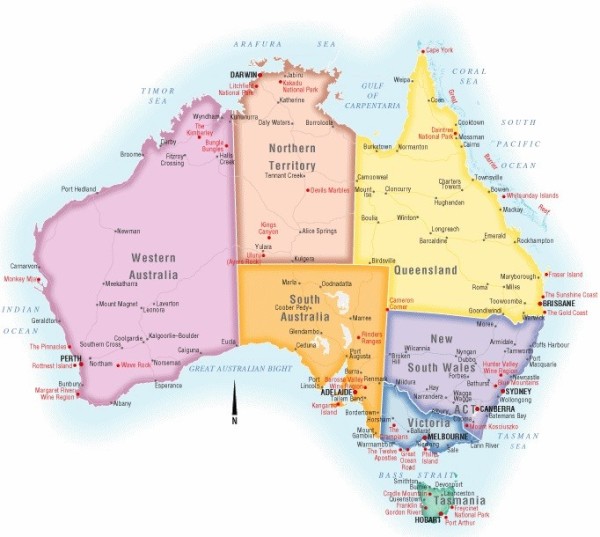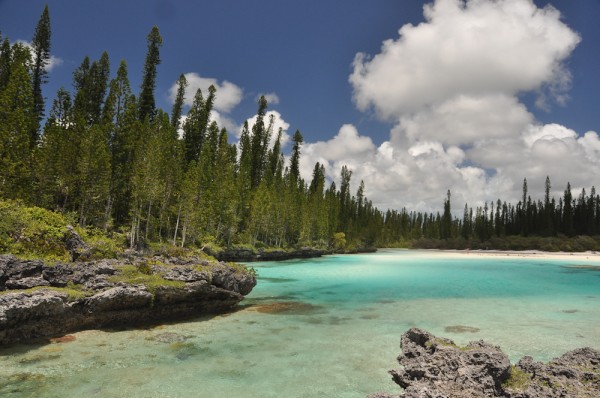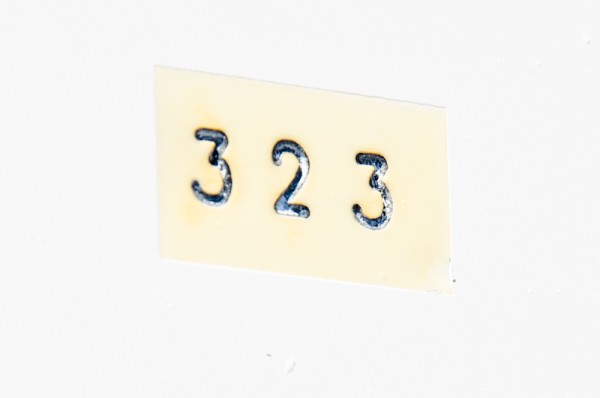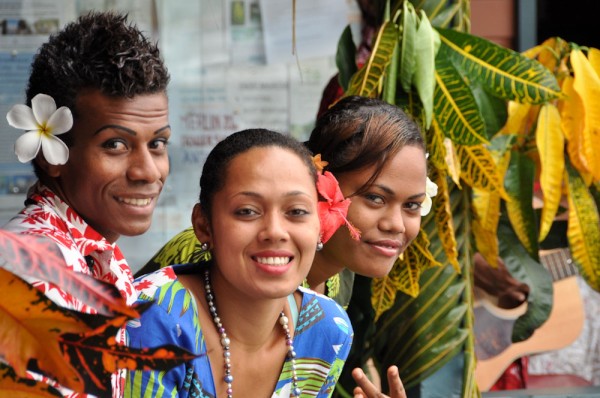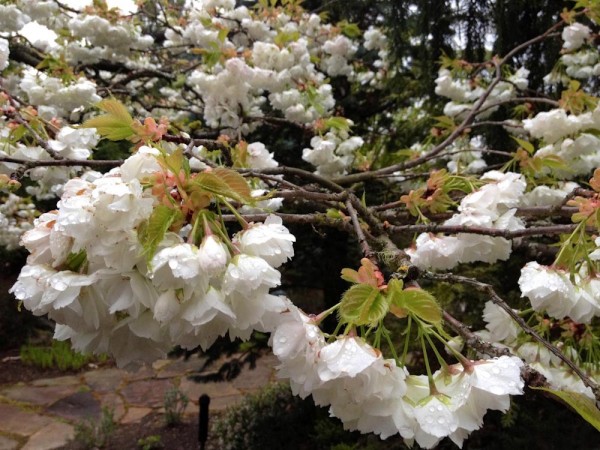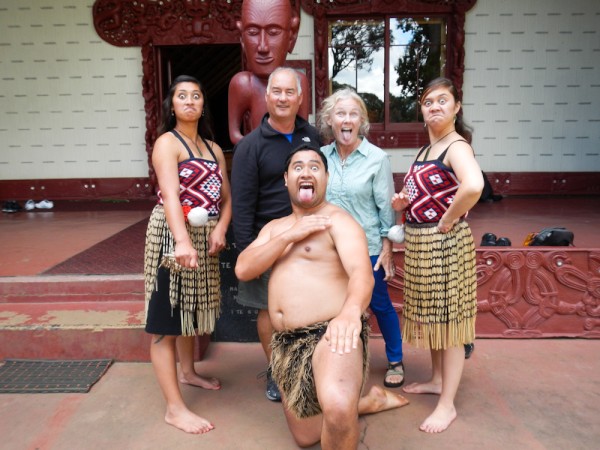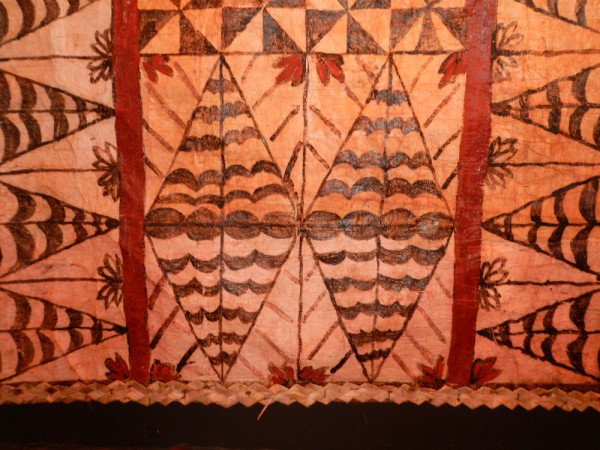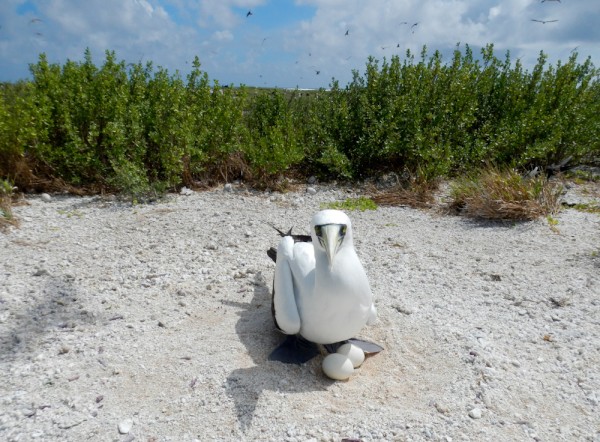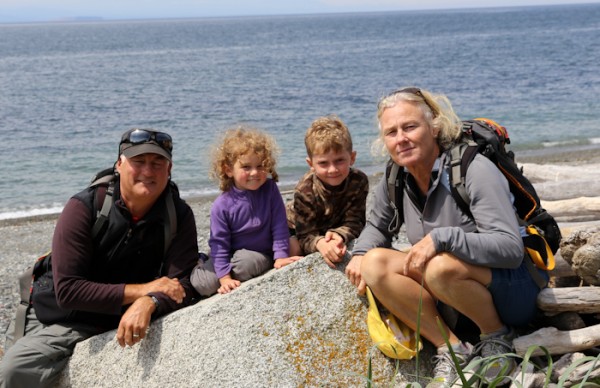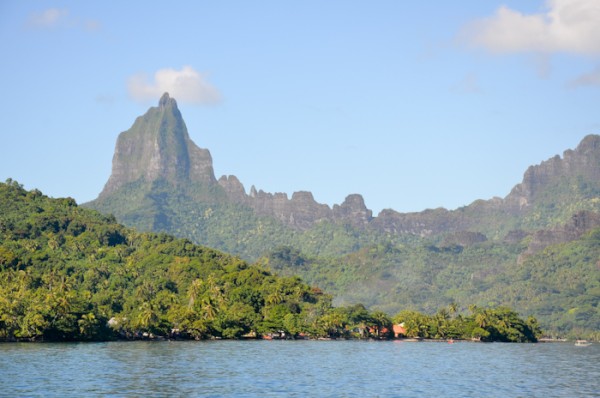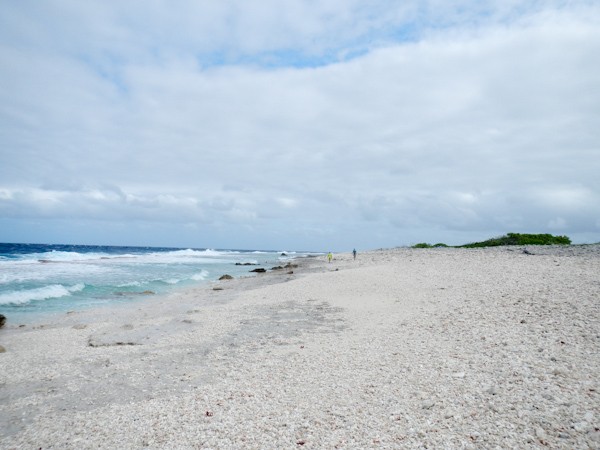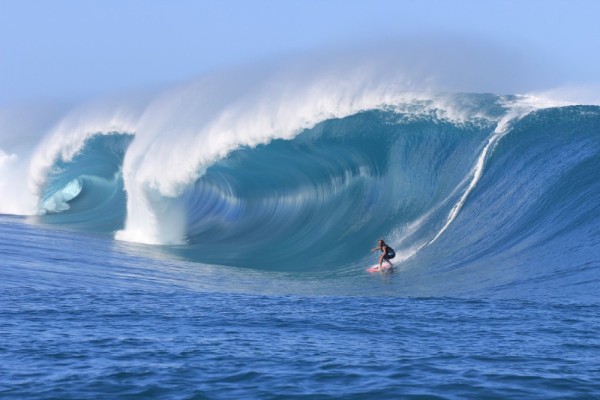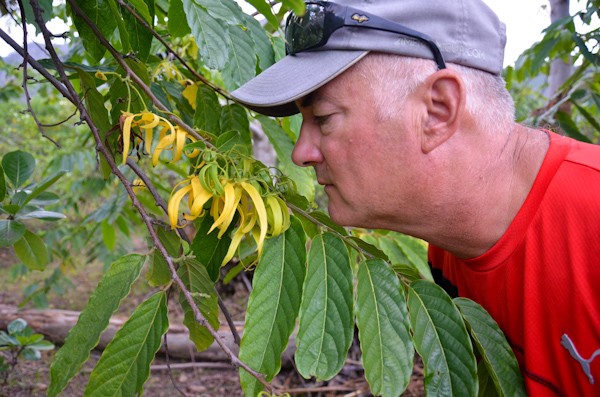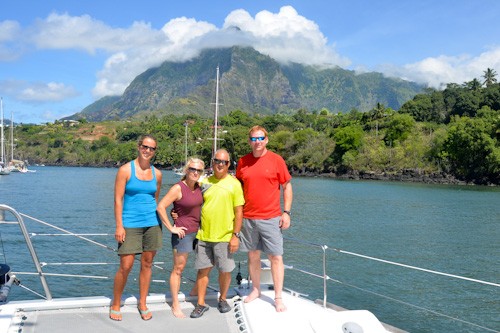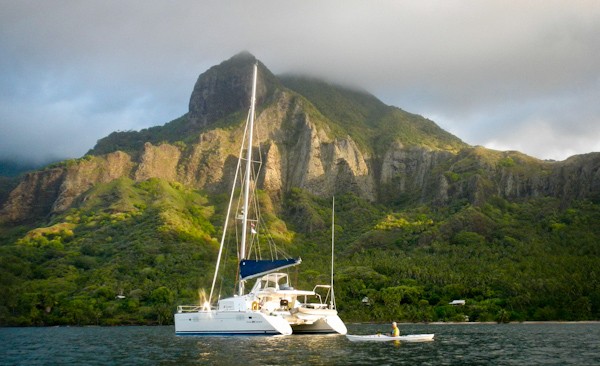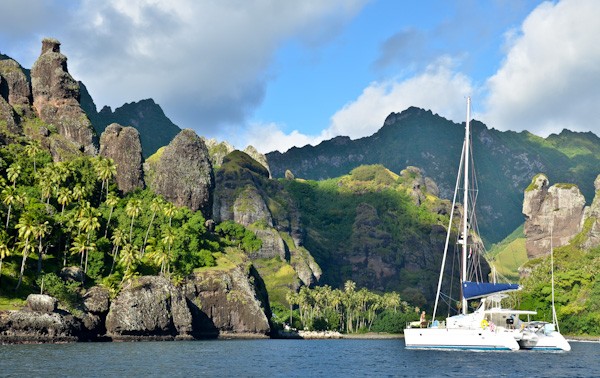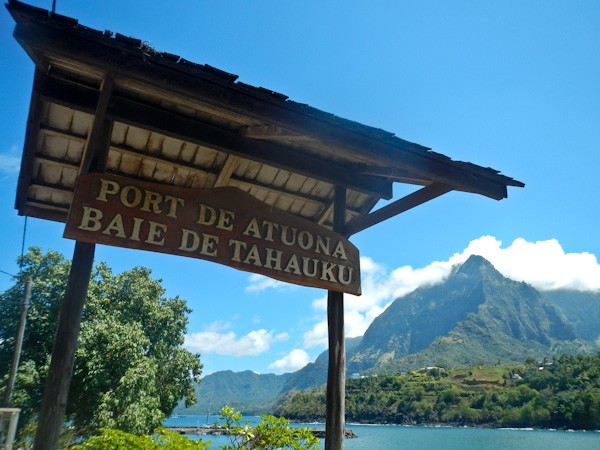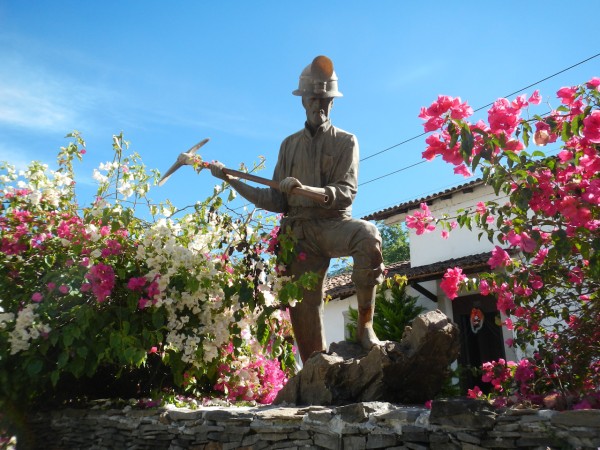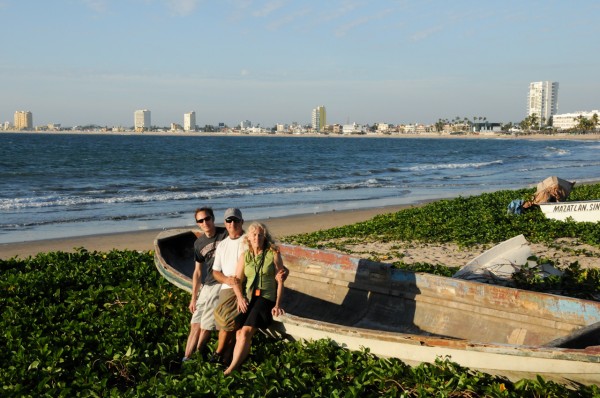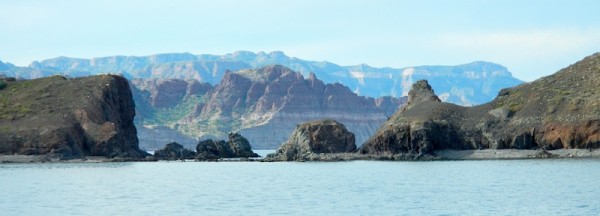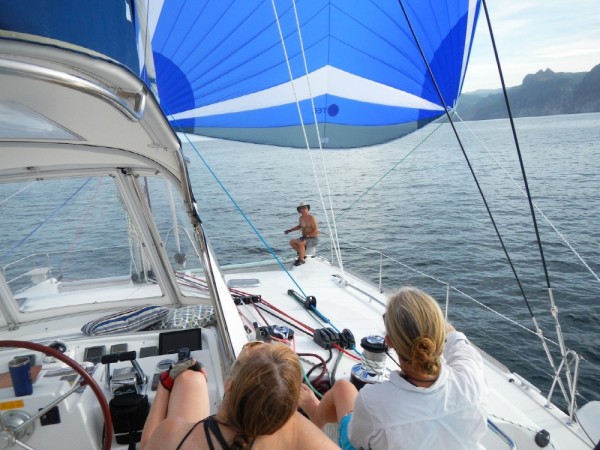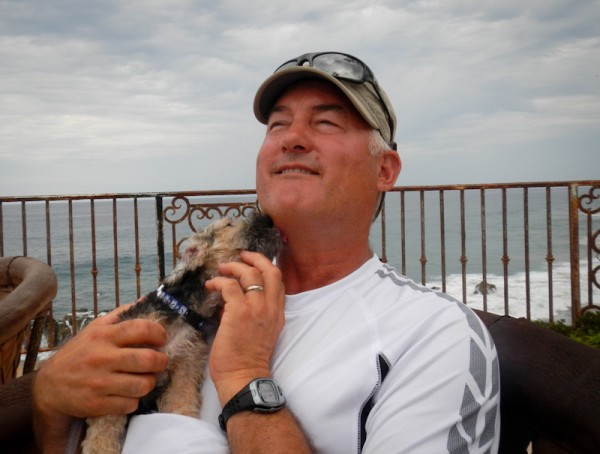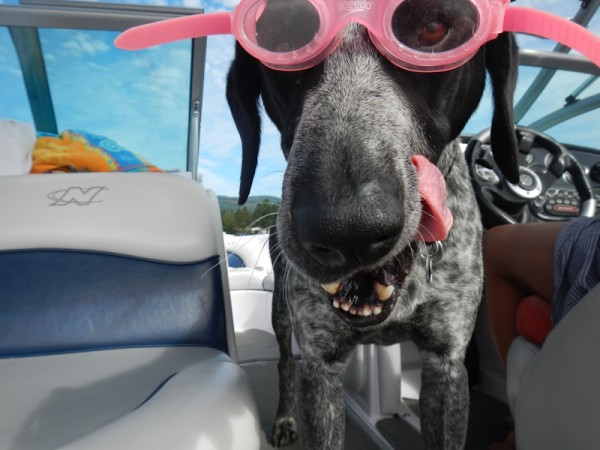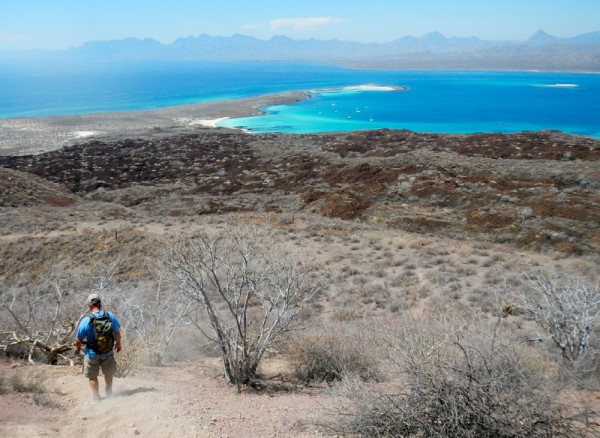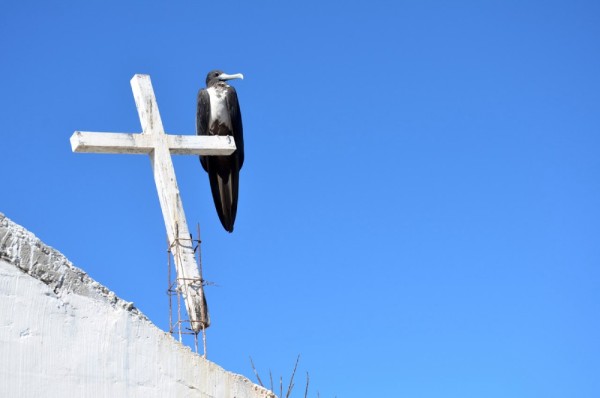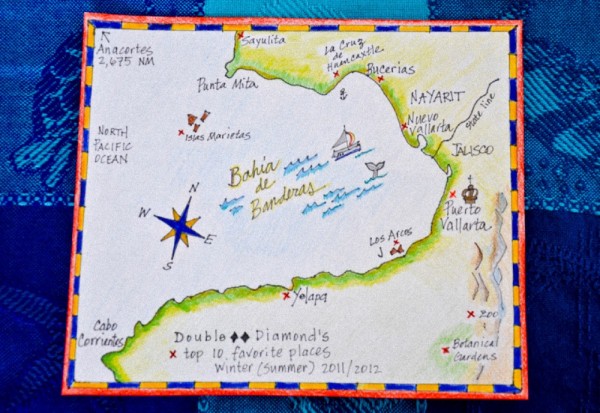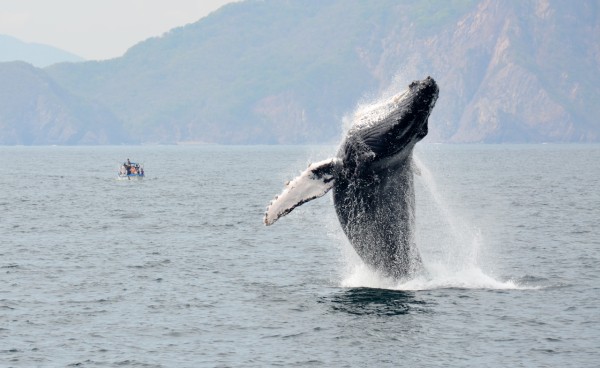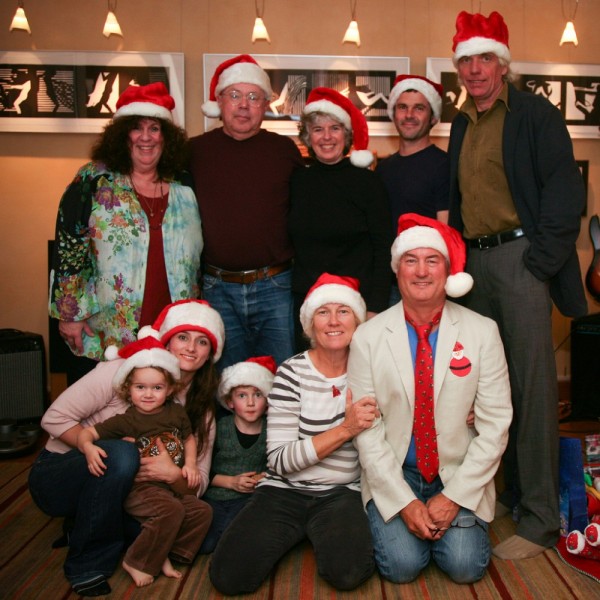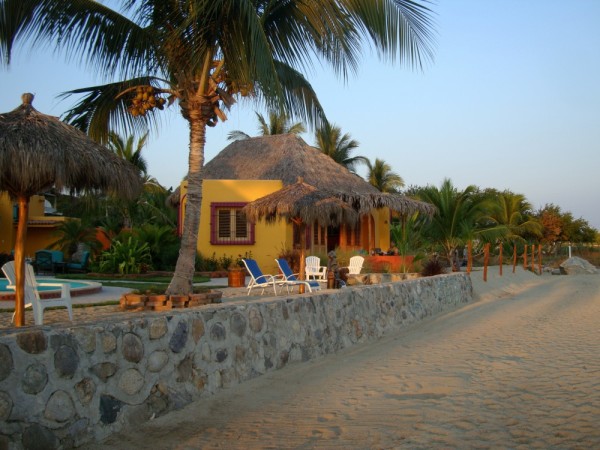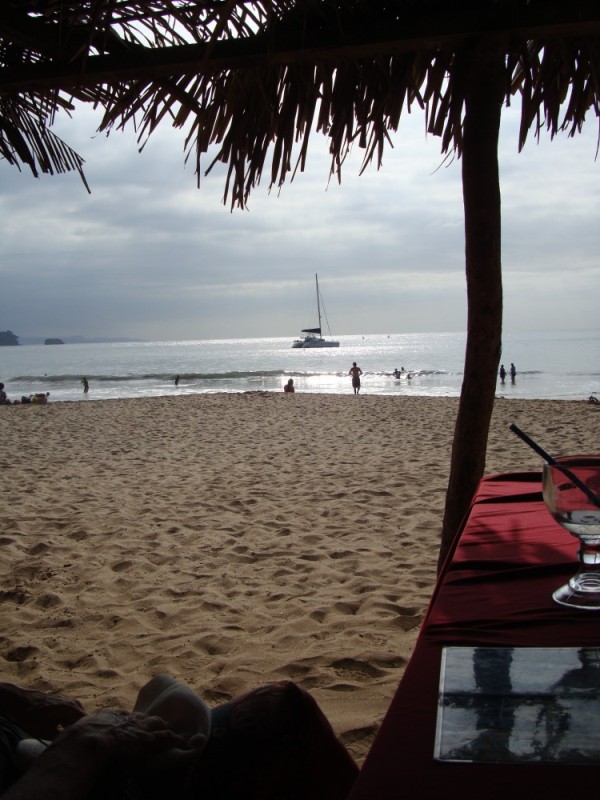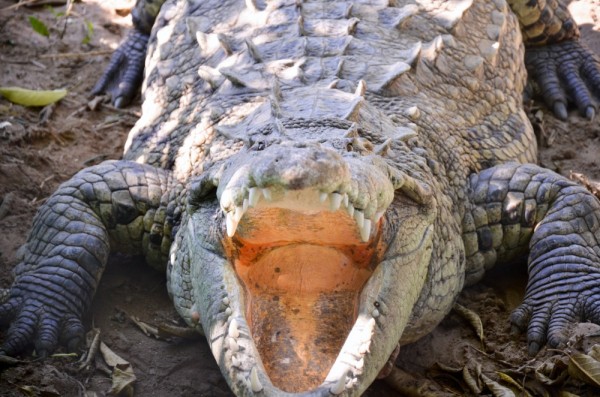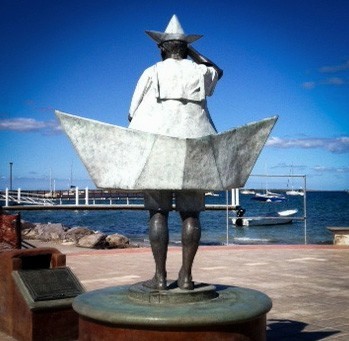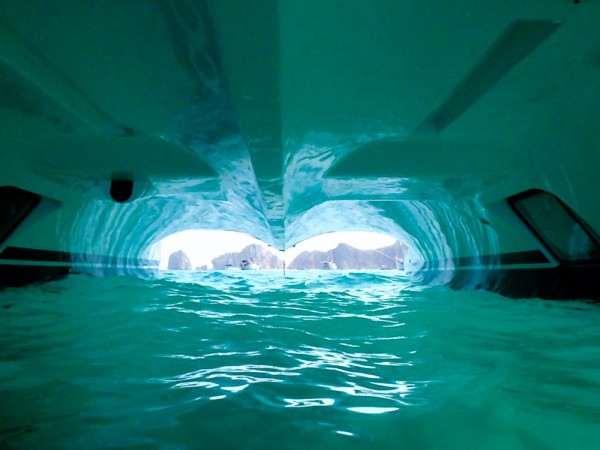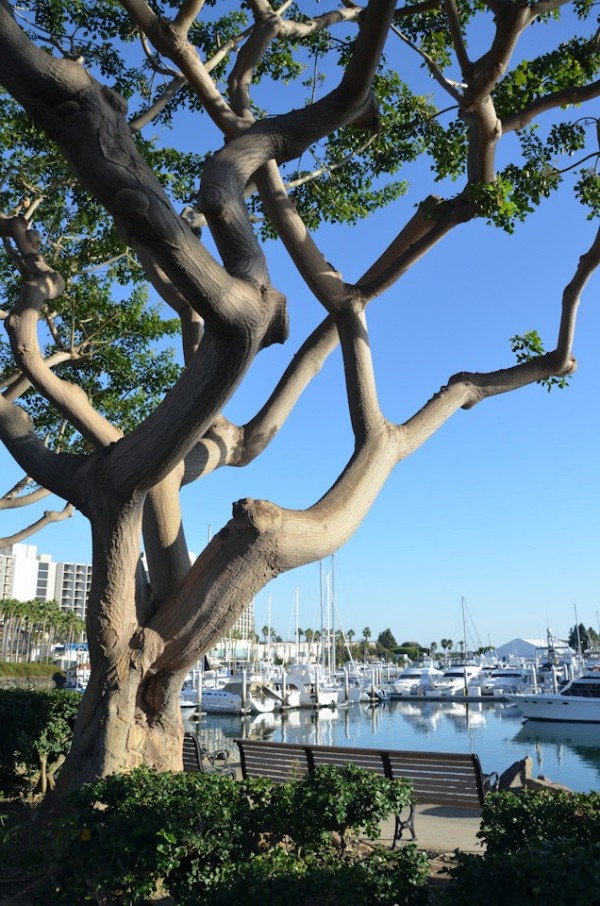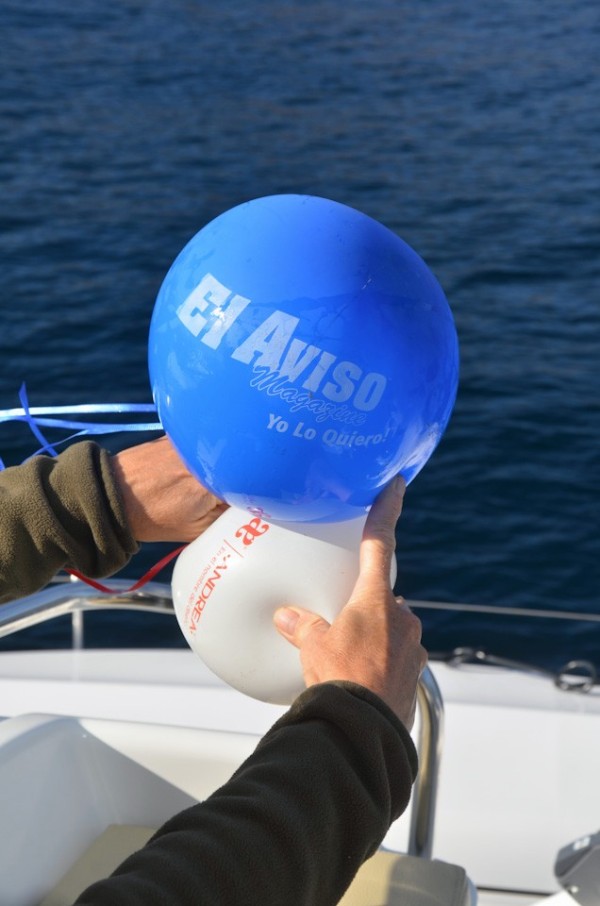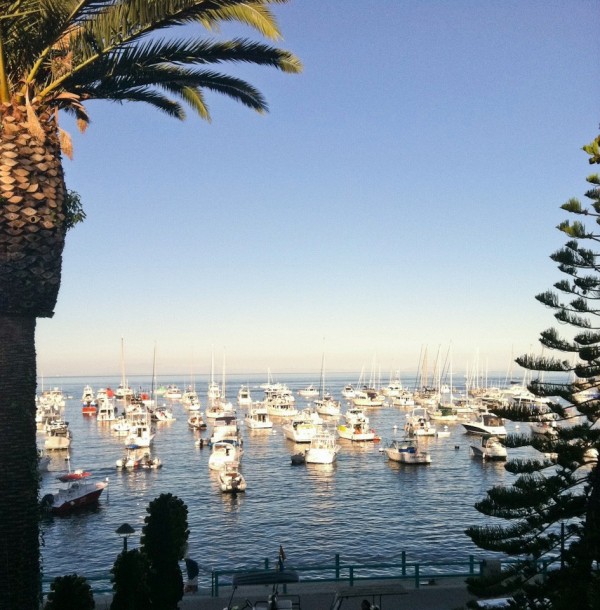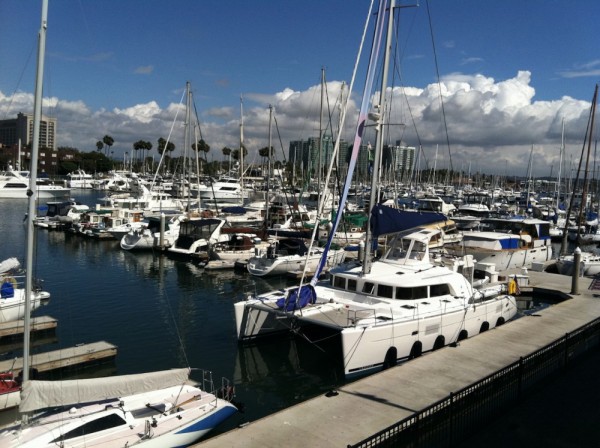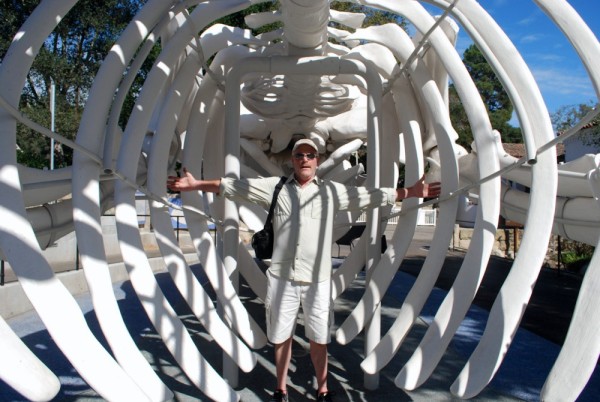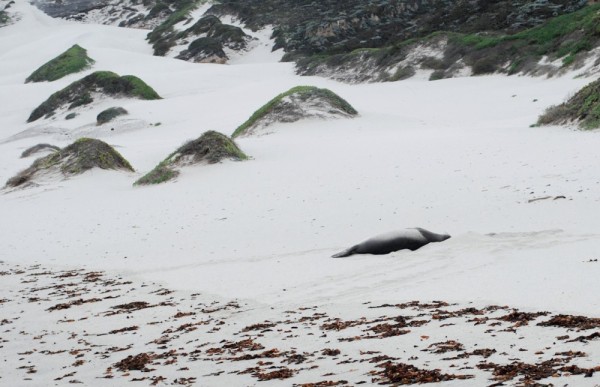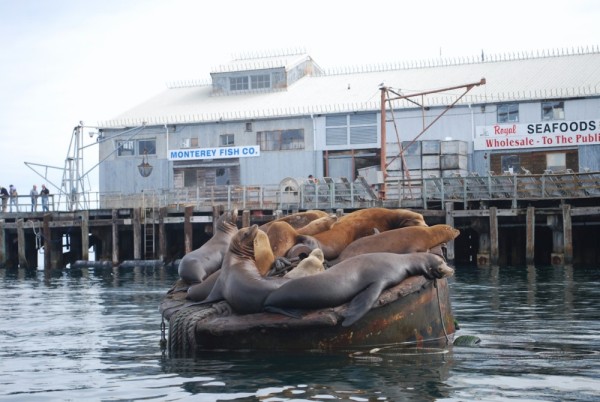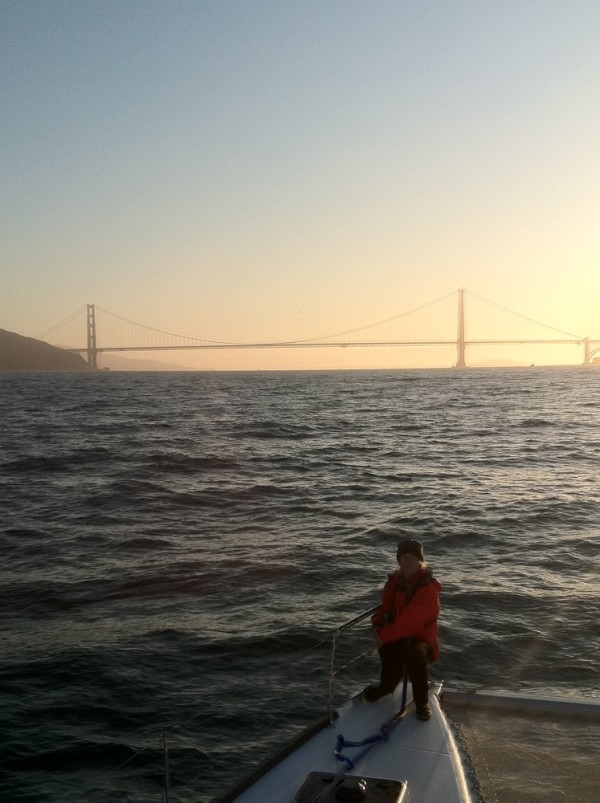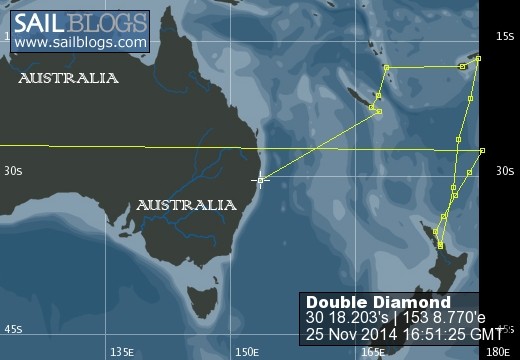
Sailing Double Diamond
25 November 2014 | Coffs Harbor
18 November 2014 | Coffs Harbor, Australia
02 November 2014 | Ill des Pins
01 November 2014
17 October 2014
14 October 2014 | Port Vila
06 October 2014 | Saweni Bay
01 September 2014 | Kirkland, Washington
04 June 2014 | Savusavu, Fiji
22 May 2014 | 21 10'S:178 19'E,
20 May 2014 | 25 46'S:176 52'E,
19 May 2014 | 30 57'S:176 16'E,
15 May 2014 | Auckland, New Zealand
17 April 2014 | Kirkland
12 April 2014 | Kirkland
04 April 2014 | Gulf Harbour Marina, New Zealand
27 March 2014 | Auckland, New Zealand
13 March 2014 | Auckland, New Zealand
22 December 2013
02 November 2013 | Opua, New Zealand
Weather Window
18 November 2014 | Coffs Harbor, Australia
Jeff/Photos by Melody
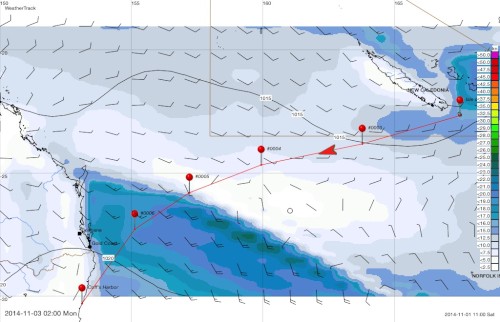
We are often asked "Isn't sailing across the ocean scary?"
98% of the time... No. The actual sailing - being on the ocean for several days and nights in a row - is often more tedious than anything and hard to describe as scary.
The most scary part of a making a crossing for us, (if "scary" is the right word - perhaps "the most anxious part" is a better descriptor) comes before departure, before actually being out on the ocean. Other sailors may feel differently, but our anxiousness revolves around trying to predict the weather on the upcoming passage and choosing the right time to leave. In Sailor-ease, this is called choosing a good "weather window".
Choosing a good weather window is a funny thing. On the not-so-funny end of things is the obvious "bad" weather window - leaving during a storm or (maybe worse) sailing into a storm. On the other end of the scale are flat calm seas, which might sound pleasant, but this end of the scale is often accompanied by no wind. Remember, we're a sailboat. Wind propels us. Yes, we do have engines, but they're really not much fun to use. They make noise, the exhaust smells, the fuel they use is costly and using them for an extended period of time can become quite boring. Sailing is much more fun and mentally challenging. To sail, we need wind.
So wind is good. Too much wind is bad and too little wind is bad in it's own rather annoying way. Fretting over choosing a good weather window has something of a Goldilocks process to it - oh that's too much, oh that's too little, oh that's just right.
On top of all that, figuring out the weather is its own peculiar kind of puzzle made more difficult by the fact that it's all about predicting what will happen out there. It's one thing to look out the window and say "oh, the wind is blowing outside". It's a bit more complicated to say "Oh, the wind WILL be blowing five days from now - 700 miles from here - and at this direction and at this speed". We're not just trying to see what the weather is like right now, we have to predict it, for several days out and a long way away.
So we fret. We sit at our computer and look at weather charts. We pick up our iPad and run various weather apps to see how they are modeling the coming weather. Perhaps we pick up the phone and pay a professional weather router to give us their forecasts and departure advice. We talk with other sailors and ask them what they think about the weather, when do they plan to depart - and why.
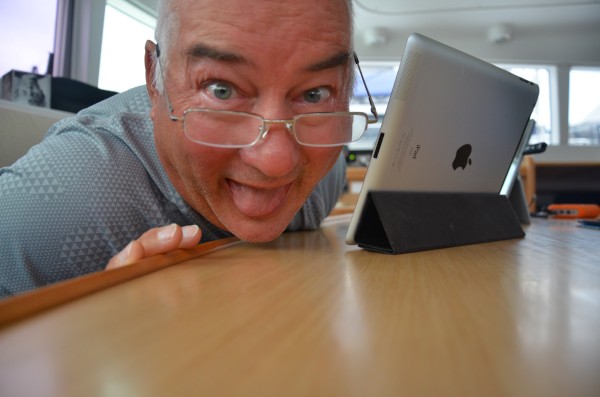
Choosing when to leave New Caledonia this time was complicated. Complicated enough that we know several boats who have not even left yet (or left for a day but went back) because the weather systems coming up out of the southern ocean have been difficult to predict these past few weeks, with quick changes occurring daily or with solid predictions of poor sailing conditions on the route they wish to sail keeping them at the dock. Boats sailing to New Zealand from New Caledonia have had a particularly difficult time.
We left with two sailing plans and the idea that we would divert to one or the other if weather changed mid-passage from what was predicted upon departure. Sailing to Australia from New Caledonia affords the luxury of multiple routes given that there is a thousand plus miles of Australian coastline at which to aim. Sailing to New Zealand does not have many options. Sailing there means pretty much going to one spot - Opua or perhaps Whangerie or Auckland, but the difference between those choices is at best 150 miles.
One other thing about bad sailing weather is that it's not so bad if you choose to sail into it. And by bad weather, I don't mean 50 knot winds and 6 meter seas. Nobody chooses to sail into that willingly - at least no one we know. Bad weather for us (or perhaps I should say uncomfortable weather that we try to avoid) is 35 to 40 knots and 4 meter seas. Our sweet spot is 15 knots and 1 meter seas, but we can easily sail in 20 to 25 knots and 2 to 3 meter seas - conditions that are quite common in the South Pacific.
Our forecasts said that on day 3 out of New Caledonia, we would see 25 to 30 knot winds and 3+ meter seas for about 24 hours. That's getting close to the high end of our comfort range, but... it's one thing to choose to sail into those conditions and another to have those conditions take you by surprise. Trying to figure out what kind of surprises might be lurking out there is a major cause of pre-departure fretting. See picture above. Again.
Sure enough, the weather front that was predicted for day 3 showed up as forecast during our passage, but no worries mate, we were ready for it and being ready for it makes all the difference in the world. In fact, when the weather front showed up, it was kind of comforting to know that the models were right and dealing us no surprises. Prior to its arrival, we enjoyed 30 hours of downwind spinnaker sailing in 15 to 20 knots of sunshine, following seas and a bright full moon at night. We could not complain.
Our experience with this front is also something of a tribute to modern sailing. Unlike sailing days of old, we are able to download updated weather forecasts while underway every day via radio or satphone - every 6 hours if we want to. Our weather updates during the passage told us that the predicted front was losing its punch. Given that information we moved to plan 2 - sailing directly to the central Australian coast rather than sailing high (aiming for the north coast) and keeping away from the front coming up from the south for as long as possible. As a result, we plunged directly into the front and worked our way through it in about 12 hours, finding that indeed, it was much weakened from what we anticipated upon departure.
We did get one surprise: Lightning. On day 6, a little over 100 miles away from the coast (and our goal) squalls started to pop up. It was 3 AM, the tropical squall witching hour. Big black stuff was starting to block out the moon. Then in the distance the lightning started. Not sure how other sailors feel about it, but give us big seas and high winds but keep the effing lightning away, please. Of all the things we've faced out on the ocean, it's lightning that scares us the most and definitely makes up the majority of that 2% scary.
We made it through the lightning just fine, but not without some moments of panic with direct strikes into the water in front of us. We diverted from our course to avoid the darkest patches that we could see on our radar and also took preventive action, storing all of our portable electronics in the oven - a Faraday cage of sorts - to protect them from EMP in the event of a close strike.
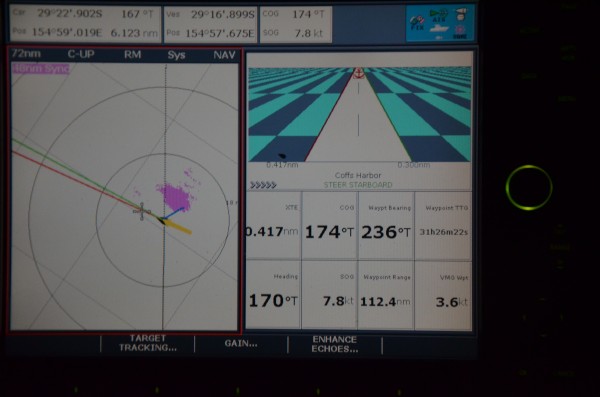
The arrival of daylight around 4:30 AM brought the lightning show to an end. As is typical with storms of this nature, they tend to fall apart as the atmosphere heats up with the arrival of the morning sun. It was as if someone flipped a switch and the electrical fireworks disappeared. Thank God.
That hour or two of concern (let's put a brave face on and not call it terror) did teach us something. The lightning we experienced was actually predicted! Looking at the weather files later, I discovered that the CAPE index was rather high for that afternoon and evening - and was predicted six days in advance. CAPE is a measurement of energy potential in the atmosphere and a high reading can indicate the potential for development of thunderstorms and lightning.
We will never ignore that weather data section again. Ever. Promise.
98% of the time... No. The actual sailing - being on the ocean for several days and nights in a row - is often more tedious than anything and hard to describe as scary.
The most scary part of a making a crossing for us, (if "scary" is the right word - perhaps "the most anxious part" is a better descriptor) comes before departure, before actually being out on the ocean. Other sailors may feel differently, but our anxiousness revolves around trying to predict the weather on the upcoming passage and choosing the right time to leave. In Sailor-ease, this is called choosing a good "weather window".
Choosing a good weather window is a funny thing. On the not-so-funny end of things is the obvious "bad" weather window - leaving during a storm or (maybe worse) sailing into a storm. On the other end of the scale are flat calm seas, which might sound pleasant, but this end of the scale is often accompanied by no wind. Remember, we're a sailboat. Wind propels us. Yes, we do have engines, but they're really not much fun to use. They make noise, the exhaust smells, the fuel they use is costly and using them for an extended period of time can become quite boring. Sailing is much more fun and mentally challenging. To sail, we need wind.
So wind is good. Too much wind is bad and too little wind is bad in it's own rather annoying way. Fretting over choosing a good weather window has something of a Goldilocks process to it - oh that's too much, oh that's too little, oh that's just right.
On top of all that, figuring out the weather is its own peculiar kind of puzzle made more difficult by the fact that it's all about predicting what will happen out there. It's one thing to look out the window and say "oh, the wind is blowing outside". It's a bit more complicated to say "Oh, the wind WILL be blowing five days from now - 700 miles from here - and at this direction and at this speed". We're not just trying to see what the weather is like right now, we have to predict it, for several days out and a long way away.
So we fret. We sit at our computer and look at weather charts. We pick up our iPad and run various weather apps to see how they are modeling the coming weather. Perhaps we pick up the phone and pay a professional weather router to give us their forecasts and departure advice. We talk with other sailors and ask them what they think about the weather, when do they plan to depart - and why.

Choosing when to leave New Caledonia this time was complicated. Complicated enough that we know several boats who have not even left yet (or left for a day but went back) because the weather systems coming up out of the southern ocean have been difficult to predict these past few weeks, with quick changes occurring daily or with solid predictions of poor sailing conditions on the route they wish to sail keeping them at the dock. Boats sailing to New Zealand from New Caledonia have had a particularly difficult time.
We left with two sailing plans and the idea that we would divert to one or the other if weather changed mid-passage from what was predicted upon departure. Sailing to Australia from New Caledonia affords the luxury of multiple routes given that there is a thousand plus miles of Australian coastline at which to aim. Sailing to New Zealand does not have many options. Sailing there means pretty much going to one spot - Opua or perhaps Whangerie or Auckland, but the difference between those choices is at best 150 miles.
One other thing about bad sailing weather is that it's not so bad if you choose to sail into it. And by bad weather, I don't mean 50 knot winds and 6 meter seas. Nobody chooses to sail into that willingly - at least no one we know. Bad weather for us (or perhaps I should say uncomfortable weather that we try to avoid) is 35 to 40 knots and 4 meter seas. Our sweet spot is 15 knots and 1 meter seas, but we can easily sail in 20 to 25 knots and 2 to 3 meter seas - conditions that are quite common in the South Pacific.
Our forecasts said that on day 3 out of New Caledonia, we would see 25 to 30 knot winds and 3+ meter seas for about 24 hours. That's getting close to the high end of our comfort range, but... it's one thing to choose to sail into those conditions and another to have those conditions take you by surprise. Trying to figure out what kind of surprises might be lurking out there is a major cause of pre-departure fretting. See picture above. Again.
Sure enough, the weather front that was predicted for day 3 showed up as forecast during our passage, but no worries mate, we were ready for it and being ready for it makes all the difference in the world. In fact, when the weather front showed up, it was kind of comforting to know that the models were right and dealing us no surprises. Prior to its arrival, we enjoyed 30 hours of downwind spinnaker sailing in 15 to 20 knots of sunshine, following seas and a bright full moon at night. We could not complain.
Our experience with this front is also something of a tribute to modern sailing. Unlike sailing days of old, we are able to download updated weather forecasts while underway every day via radio or satphone - every 6 hours if we want to. Our weather updates during the passage told us that the predicted front was losing its punch. Given that information we moved to plan 2 - sailing directly to the central Australian coast rather than sailing high (aiming for the north coast) and keeping away from the front coming up from the south for as long as possible. As a result, we plunged directly into the front and worked our way through it in about 12 hours, finding that indeed, it was much weakened from what we anticipated upon departure.
We did get one surprise: Lightning. On day 6, a little over 100 miles away from the coast (and our goal) squalls started to pop up. It was 3 AM, the tropical squall witching hour. Big black stuff was starting to block out the moon. Then in the distance the lightning started. Not sure how other sailors feel about it, but give us big seas and high winds but keep the effing lightning away, please. Of all the things we've faced out on the ocean, it's lightning that scares us the most and definitely makes up the majority of that 2% scary.
We made it through the lightning just fine, but not without some moments of panic with direct strikes into the water in front of us. We diverted from our course to avoid the darkest patches that we could see on our radar and also took preventive action, storing all of our portable electronics in the oven - a Faraday cage of sorts - to protect them from EMP in the event of a close strike.

The arrival of daylight around 4:30 AM brought the lightning show to an end. As is typical with storms of this nature, they tend to fall apart as the atmosphere heats up with the arrival of the morning sun. It was as if someone flipped a switch and the electrical fireworks disappeared. Thank God.
That hour or two of concern (let's put a brave face on and not call it terror) did teach us something. The lightning we experienced was actually predicted! Looking at the weather files later, I discovered that the CAPE index was rather high for that afternoon and evening - and was predicted six days in advance. CAPE is a measurement of energy potential in the atmosphere and a high reading can indicate the potential for development of thunderstorms and lightning.
We will never ignore that weather data section again. Ever. Promise.
Comments
| Vessel Name: | Double Diamond |
| Vessel Make/Model: | Lagoon 440 |
| Hailing Port: | Anacortes, Washington, USA |
| Crew: | Jeff & Melody Christensen |
| About: | |
| Social: |
Double Diamond's Photos - Main
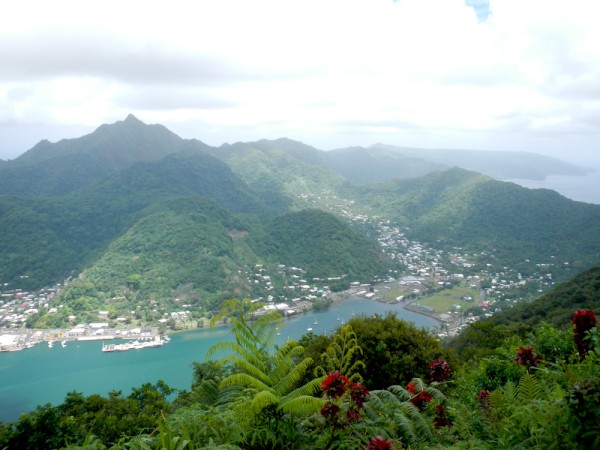 |
Pago Pago is a real place and it's not in Bloom County. Duke is not the Governor nor is Zonker the Lt. Governor.
58 Photos
Created 22 September 2013
|
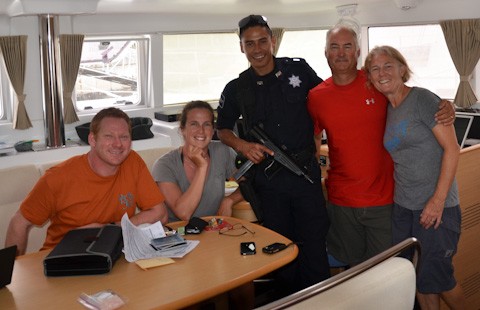 |
Our last month in Puerto Vallarta before leaving for French Polynesia.
25 Photos
Created 28 March 2013
|
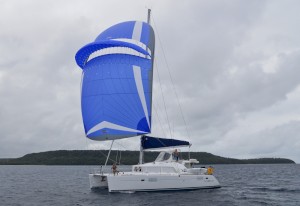
Who: Jeff & Melody Christensen
Port: Anacortes, Washington, USA

